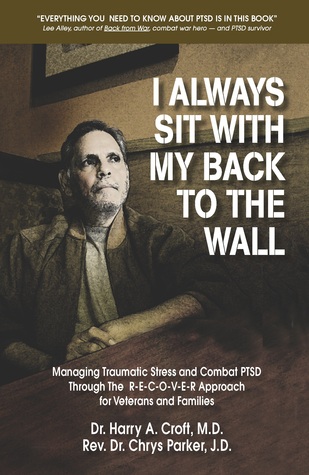PTSD: A Real Nightmare
- Feb
- 10
 According to the textbooks, Post Traumatic Stress Disorder (PTSD) is a condition that can result from exposure to “event or events that involved actual or threatened death or serious injury, or a threat to the physical integrity of self and others, and during which the person’s response involved intense fear, helplessness or horror. Although we usually think of PTSD as resulting from combat situations (such as war), it can also occur as a result of other events such as rape, assault, civilian shootings, fires, hurricanes, or serious automobile accidents, and other such life threatening events. Not all those exposed to these events will develop PTSD, however, and experts are now trying to figure out what background events, or psychological make-up factors determine who will, from similar “stressors,” develop the disorder.
According to the textbooks, Post Traumatic Stress Disorder (PTSD) is a condition that can result from exposure to “event or events that involved actual or threatened death or serious injury, or a threat to the physical integrity of self and others, and during which the person’s response involved intense fear, helplessness or horror. Although we usually think of PTSD as resulting from combat situations (such as war), it can also occur as a result of other events such as rape, assault, civilian shootings, fires, hurricanes, or serious automobile accidents, and other such life threatening events. Not all those exposed to these events will develop PTSD, however, and experts are now trying to figure out what background events, or psychological make-up factors determine who will, from similar “stressors,” develop the disorder.
PTSD symptoms include three different clusters of emotions or behaviors: Re-experiencing, avoidance, and arousal. To be present someone has to be exposed to a stressor as described above, and to have symptoms from all of the three clusters. Sometimes the symptoms do not show up until months or years after the “stressor” however.
Re-experiencing includes thoughts or recollections of the events that are distressing and reoccurring, nightmares, flashbacks, and distress when exposed to sensory cues that remind the person of the event (such as loud booms, the sight of blood, etc).
Avoidance symptoms include: not wanting to talk or think about the traumas, avoiding places or activities or people that remind the sufferer of the event, decreased interest or participation in social events (like get-togethers or parties), feeling separated or detached from others (even friends or family members), and having a limited (mostly negative) range of feelings (like anger or depression instead of joy, love and intimacy).
Arousal symptoms include: difficulty getting restful sleep, irritability and outbursts of anger (causing problems at home, school or work, being jumpy and easily startled (from loud noises or someone unexpectedly coming up from behind them), being suspicious or paranoid, and having trouble concentrating.
To make the diagnosis of PTSD, the symptoms must have been present for at least a month, and cause problems in everyday life activities. One difficulty is that many people do not recognize the symptoms for what they are — rather they just accept them as “the way I have become.” As a result of the disorder may sufferers turn to drugs or alcohol to cope, or become depressed, isolated or loners.
Treatment for PTSD is available through psychotherapy (individually or in group), medication, and finding a support group or symptom. But to be helped the sufferer must first recognize the disorder for what it is, a diagnosable psychiatric disorder resulting from extreme trauma, and begin to seek help.
Dr. Harry Croft is a Board-Certified Psychiatrist and Medical Director of HealthyPlace.com. He speaks to groups across the US and around the world on the treatment of PTSD and presented to over 1000 audiences, in all 50 states, and 7 foreign countries, including, conferences for medical related companies and associations.
Search Dr.Croft.com
Dr. Harry Croft’s PTSD Blog
Recent Comments
Archives
- August 2022
- December 2018
- April 2017
- March 2017
- February 2017
- January 2017
- October 2016
- January 2015
- October 2014
- April 2013
Categories
- Abuse
- Alzheimer's
- bipolar
- depression
- Eating Disorder
- flotation therapy
- Media
- PTSD
- Research
- Uncategorized
- Updates




